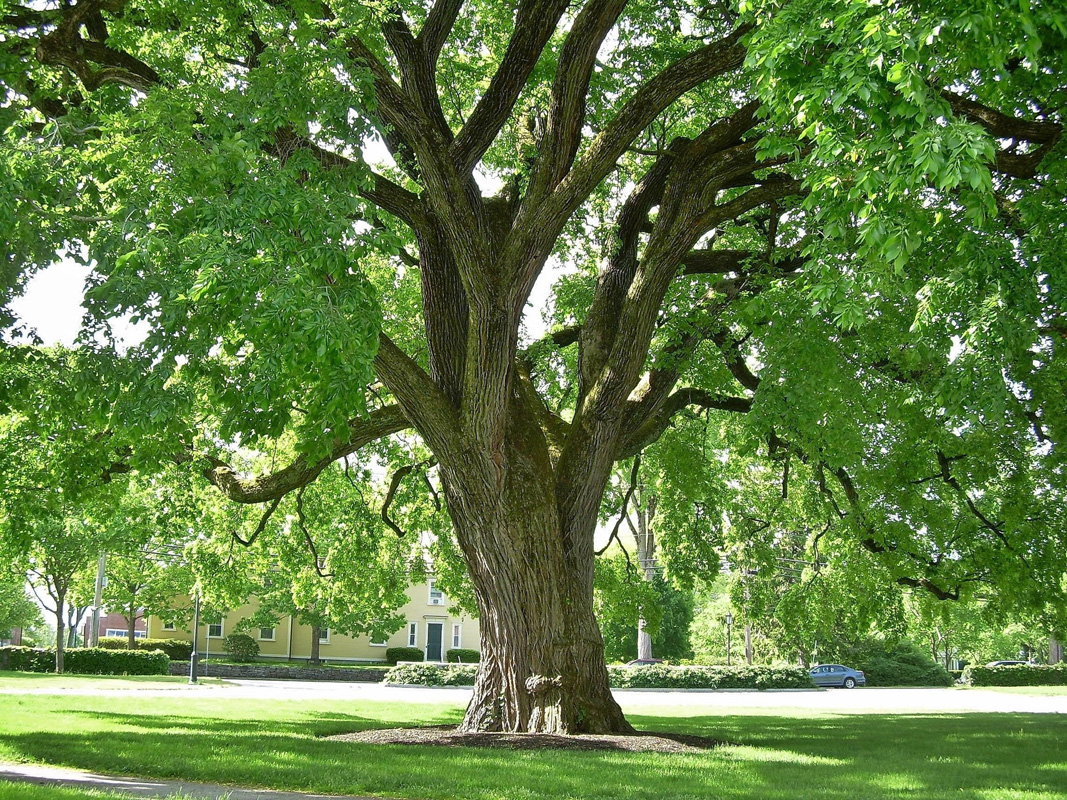Large tree roots can pose a significant threat to septic systems, causing issues such as root intrusion and potential damage. It is important for homeowners to understand how tree roots seek out water sources and the mechanisms they use to infiltrate septic systems. By recognizing the early warning signs of root intrusion and implementing preventative measures, such as installing root barriers and choosing safe tree species, you can protect your septic system and avoid costly repairs.
How Tree Roots Seek Out Water Sources

Landscaping companies often overlook the potential impact of large tree roots on underground systems. Trees have a natural tendency to seek out water sources for sustenance, and septic systems provide an abundant supply of moisture. As trees grow, their roots can extend far beyond the drip line of the tree canopy, infiltrating underground pipes and tanks in search of water.
Understanding the biology of tree roots is crucial in preventing damage to septic systems. The root system consists of both large, woody roots that provide structural support and small feeder roots that absorb water and nutrients. These feeder roots are particularly adept at locating and infiltrating septic systems, leading to clogs and damage. Even minor disruptions can cause significant issues over time.
Homeowners should be aware of the potential risks posed by tree roots and take proactive measures to protect their septic systems. By working with landscaping companies to design root-safe landscapes and installing root barriers around septic tanks, you can minimize the likelihood of root intrusion and ensure the long-term functionality of your system. Regular monitoring and maintenance are also essential to detect any issues early and prevent costly repairs.
Mechanisms of Root Intrusion into Septic Systems
Landscape designs that incorporate trees near septic systems can inadvertently create pathways for root intrusion. As large tree roots grow and spread, they can exert significant pressure on underground pipes and tanks, causing cracks and leaks. Once a root breaches the surface of a septic system, it can quickly expand and clog the entire system.
Tree cutting service may be required to remove roots that have infiltrated a septic system, but this can be a costly and time-consuming process. By understanding the mechanisms of root intrusion and taking preventive measures, such as installing root barriers and choosing appropriate tree species, homeowners can avoid the need for costly repairs and maintenance.
Tree removal contractors can also assist in assessing the extent of root damage and recommending appropriate solutions. By working with professionals who specialize in tree root management, homeowners can effectively address root intrusion issues and prevent further damage to their septic systems.
Early Warning Signs of Root Intrusion
Tree roots can cause a variety of early warning signs that indicate they have infiltrated a septic system. These can include slow drains, gurgling noises, and foul odors emanating from drains or toilets. If you notice any of these signs, it is important to contact a tree cutting service to assess the situation promptly.
Large tree roots may also cause sewage backups in drains or toilets, which can indicate a more significant issue with root intrusion. In some cases, tree removal service may be required to address the problem effectively. By recognizing the early warning signs of root intrusion, homeowners can take immediate action to prevent further damage to their septic systems.
Homeowners should be proactive in monitoring the health of their septic systems and addressing any issues promptly. By working with tree removal contractors and septic tank pumping services, you can ensure that your system remains in good working order and avoid costly repairs down the line.
Diagnostic Methods for Root Intrusion

Tree removal contractors can utilize a variety of diagnostic methods to assess the extent of root intrusion into septic systems. These may include using cameras to inspect the interior of pipes and tanks, conducting dye tests to identify leaks, and performing pressure tests to assess system functionality. By utilizing these diagnostic methods, homeowners can better understand the scope of the problem and determine appropriate solutions.
When diagnosing root intrusion, it is essential to work with professionals who have experience in identifying and addressing tree root issues. Tree removal contractors are trained to assess the extent of damage and recommend the most effective solutions for preventing further intrusion. By investing in diagnostic services, homeowners can take proactive measures to protect their septic systems and avoid costly repairs.
Fertilizing companies may also offer services that can help mitigate the impact of large tree roots on septic systems. By using root-friendly fertilizers and soil treatments, homeowners can promote healthy root growth while minimizing the risk of intrusion into underground systems.
Potential Damage From Large Tree Roots
When left unchecked, large tree roots can cause significant damage to septic systems, resulting in leaks, clogs, and system failures. The pressure exerted by tree roots can cause pipes to crack and tanks to collapse, leading to costly repairs and maintenance. By understanding the potential risks posed by tree roots, homeowners can take proactive measures to protect their septic systems.
Tree removal service may be required to address extensive root damage, but this can be a disruptive and expensive process. By recognizing the signs of root intrusion early on and implementing preventative measures, such as installing root barriers and choosing safe tree species, you can avoid the need for costly repairs and ensure the long-term functionality of your system.
Homeowners should be vigilant in monitoring the health of their septic systems and addressing any issues promptly. By working with fertilizing companies to maintain healthy soil conditions and promoting root growth, you can minimize the risk of root intrusion and protect your system from potential damage.
Financial Impact of Root Damage
Root damage from large tree roots can have a significant financial impact on homeowners, resulting in costly repairs and maintenance. In some cases, root intrusion may necessitate the replacement of entire septic systems, leading to thousands of dollars in expenses. By understanding the financial implications of root damage, homeowners can take proactive measures to prevent costly repairs.
Choosing safe tree species and installing root barriers can help minimize the risk of root intrusion and reduce the likelihood of expensive repairs. By investing in preventative measures and working with septic companies to maintain the health of your system, you can avoid the financial burden of root damage and ensure the long-term functionality of your septic system.
Fertilizing companies may also offer services that can help mitigate the financial impact of root damage. By using root-friendly fertilizers and treatments, homeowners can promote healthy root growth while minimizing the risk of intrusion into underground systems. By investing in these services, homeowners can protect their septic systems and avoid costly repairs.
Choosing Safe Tree Species

When planting trees near septic systems, it is essential to choose species that are less likely to cause damage. Some trees, such as willow and poplar, have aggressive root systems that seek out water sources, making them more likely to infiltrate septic systems. By opting for safer tree species, such as maple or oak, homeowners can minimize the risk of root intrusion and protect their septic systems.
Working with landscaping companies can help homeowners select appropriate tree species for their property and avoid potential issues with root damage. By analyzing the soil and drainage conditions on your property, landscaping professionals can recommend trees that are better suited to the environment and less likely to cause damage to underground systems. By choosing safe tree species, homeowners can protect their septic systems and ensure their long-term functionality.
Homeowners should also consider the size and growth patterns of trees when planting near septic systems. Trees that have small root systems and slow growth rates are less likely to pose a threat to underground systems, while fast-growing trees with large root systems may require additional precautions, such as installing root barriers or regular maintenance. By understanding the characteristics of different tree species, homeowners can make informed decisions about planting near septic systems.
Installing Root Barriers
Root barriers are a preventative measure that can help protect septic systems from the intrusion of large tree roots. These barriers are typically made of durable materials, such as plastic or metal, and are installed underground around septic tanks and pipes to prevent roots from infiltrating the system. By installing root barriers, homeowners can minimize the risk of root intrusion and maintain the functionality of their septic systems.
Working with septic companies to install root barriers can ensure that the barriers are properly placed and effectively prevent root intrusion. By consulting with professionals who specialize in septic system maintenance, homeowners can implement preventative measures that protect their systems from potential damage. By investing in root barriers, homeowners can avoid costly repairs and ensure the long-term functionality of their septic systems.
Regular maintenance of root barriers is essential to ensure their effectiveness in preventing root intrusion. By inspecting and repairing barriers as needed, homeowners can extend the life of their septic systems and avoid the need for costly repairs. By working with septic pumping companies to maintain root barriers, homeowners can protect their systems and preserve the integrity of their underground pipes and tanks.
Importance of Regular Septic System Maintenance
Regular septic system maintenance is essential for preventing issues related to large tree roots and ensuring the long-term functionality of your system. By scheduling routine inspections and maintenance with septic tank pumping services, homeowners can identify potential problems early on and address them before they escalate. Regular maintenance can also help detect root intrusion and prevent costly damage to septic systems.
Septic companies can provide a range of services to maintain the health of your septic system, including pumping, cleaning, and inspections. By working with professionals who specialize in septic system maintenance, homeowners can ensure that their systems remain in good working order and avoid costly repairs. By investing in regular maintenance, homeowners can protect their septic systems from the impact of tree roots and preserve the integrity of their underground pipes and tanks.
Fertilizing companies may also offer services that can help promote healthy soil conditions and prevent root intrusion into septic systems. By utilizing root-friendly fertilizers and treatments, homeowners can support healthy root growth while minimizing the risk of damage to underground pipes and tanks. By investing in these services, homeowners can protect their septic systems and prolong their lifespan.
Immediate Actions for Addressing Root Damage

If you suspect root damage to your septic system, it is essential to take immediate action to address the issue. Contacting septic pumping companies or tree removal contractors can help assess the extent of the damage and recommend appropriate solutions. By addressing root damage promptly, homeowners can prevent further issues and protect the long-term functionality of their septic systems.
Tree removal service may be necessary to remove large tree roots that have infiltrated a septic system and caused damage. By working with professionals who specialize in tree root management, homeowners can effectively address root damage and prevent further intrusion. By investing in immediate action to address root damage, homeowners can avoid costly repairs and ensure the continued functionality of their septic systems.
Homeowners should be proactive in addressing root damage to their septic systems and implementing preventative measures to protect against future issues. By working with septic pumping companies and tree removal contractors, homeowners can address root damage promptly and prevent costly repairs. By investing in immediate actions to address root damage, homeowners can protect their septic systems and avoid the financial burden of extensive repairs.
Large tree roots can pose a significant threat to septic systems, causing issues such as root intrusion and potential damage. By understanding how tree roots seek out water sources, the mechanisms of root intrusion, and the importance of early detection, homeowners can take proactive measures to protect their septic systems. By choosing safe tree species, installing root barriers, and investing in regular maintenance, homeowners can ensure the long-term functionality of their septic systems and avoid costly repairs. By taking immediate action to address root damage, homeowners can protect their systems and preserve the integrity of their underground pipes and tanks.






